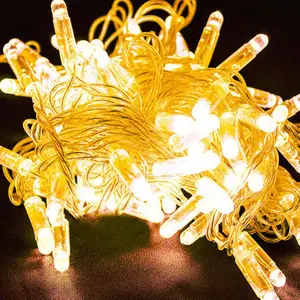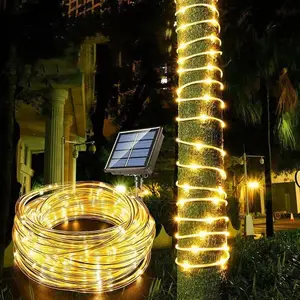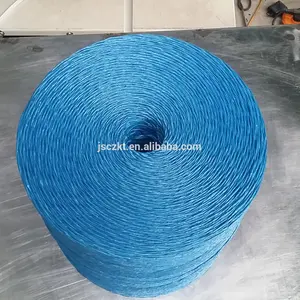Introduction
Garden string, also known as twine, is a simple yet vital tool in gardening. Its applications go beyond just supporting plants. This guide will explore the diverse world of garden string, discussing its various types, selection process, and practical applications in outdoor spaces. We'll also delve into its creative uses in crafting and decoration, and provide essential safety and maintenance tips. Whether you're an experienced gardener or a novice, this comprehensive guide will help you leverage the full potential of garden string to revitalize your outdoor space.
Demystifying the Basics of Garden String
Garden string is a fundamental tool for gardeners. It's used to support, tie, and train plants, hang bunches of herbs, garlic, and onions for storage and drying, and mark out rows. Its utility spans all forms of gardening activities. However, the quality of the twine is critical. Low-quality twine can break unexpectedly, causing plants to fall. Therefore, it's important to choose robust, durable garden twines that gardeners can trust for their gardening tasks.
Varieties of Garden String
Garden string comes in various types, each with unique features. There are options that are 100% biodegradable and compostable, making them an eco-friendly choice. Some blend well in gardens due to their color, while others are ideal for tying jobs in the garden and crafting. There are also compact options and those made of 100% natural fibers, perfect for heavy-duty tasks.
Selecting the Appropriate Garden String
Choosing the right garden string depends on your specific needs. Consider factors like durability, strength, material, and price. Garden twines are usually made of natural materials like cotton, flax, jute, silk, or synthetic materials like polypropylene, nylon, acrylic. Natural twines are great for tying plants to stakes or building trellises, while strong synthetic twines are ideal for hanging purposes. The best twine is durable, visually appealing, gentle on plants, and fits your budget.
Practical Applications of Garden String in Outdoor Spaces
Garden strings are primarily used to support plants, ensuring their healthy growth. They are tied to stakes or trellises to provide support to tall plants like tomatoes or peppers. Garden strings can also be used to create straight rows of plants, ensuring an organized garden layout. Additionally, they can be used for hanging purposes, such as hanging onions, garlic, herbs, or plant pots. They can even be used innovatively to grow tomatoes upside down. Garden strings also play a role in espalier training, where they help control the growth pattern of fruit tree branches.
Designing Garden Layouts
Designing a garden layout can be a challenging task, especially for beginners. However, a clever trick involving garden string can simplify the process. This method involves using stakes and garden string to map out a proposed layout before getting to work. This string layout trick not only helps in visualizing the design but also in managing the garden's drainage issues.
Training Climbing Plants
Training climbing plants can be a breeze with the right use of garden string. When planting a climber, it often needs to be tied to a support initially, or guided towards it. This is where garden string comes in handy. You can provide support by fixing horizontal wires, and tying the plant's stems into the wires using garden string. Keep the string loose to allow for growth. This method is effective for various climbers including clematis, climbing hydrangeas, and smaller climbing roses.
Constructing DIY Garden Structures
Garden string can be a versatile tool in building DIY garden structures. It can be used to create a mega trellis for climbing plants like squash and cucumbers, using scrap wood and a metal threaded rod. The string is run through metal eyelets screwed into the wood, creating a crisscross pattern for plants to climb. Garden string can also be used to create tomato hangers from fence panels, with the string tied to the top and tomato clips used to hold the plants. Another use is in creating a micro deer fence around specific plants, with the string woven around wooden posts.
Crafting and Decorative Applications of Garden String
Garden string can be used in a variety of crafting and decorative projects for your outdoor space. From creating rustic DIY twine bowls, twine apple art, to decorative twine wrapped bottles, the possibilities are endless. Twine can also be used to make unique jewelry, placemats, and even cabinet handle makeovers. It's a versatile material that can be used to add a rustic charm to your garden decor. Additionally, twine can be used to create holiday decorations, embellish clocks, make coasters, and even upcycle light bulbs into decorative pieces. It's an affordable and creative way to transform your outdoor space.
Creating Garden Art
Creating garden art with string is a fun and engaging activity that can involve both adults and children. One such project is string art, where you can use garden string to create beautiful designs on a wooden board. The process involves preparing the board, creating a template of your design, attaching nails along the design, and then stringing the garden string from nail to nail to fill out the design. This can be a great way to add a personal touch to your garden and even involve the kids in a creative project.
Making Homemade Bird Feeders
Bird watching can be a delightful hobby, and what better way to attract feathered friends to your garden than with bird feeders? Homemade bird feeders not only provide snacks to your backyard birds, but also add a charming touch to your outdoor space. They can be made from various materials, including pinecones, mason jars, up-cycled bottles, and teacups. These delightful and budget-friendly DIY bird feeders are easy to create and offer a way to enjoy more time outside. Gather your materials, including garden string, unleash your creativity, and embark on a journey to create bird-friendly havens right in your backyard.
Designing Outdoor Lighting Displays
Outdoor string lighting can transform your garden into a magical space. They can be hung from pergolas, trees, or draped from buildings, introducing a versatile lighting solution. String lights are ideal for outdoor dining areas, creating an atmospheric setting. They can be combined with candles for an intimate party setting or used to illuminate backyard walls. Solar-powered options are also available, which have improved significantly in quality. For larger spaces, consider products with connectable cables, allowing you to illuminate multiple features from a single power source.
Safety and Maintenance Tips for Using Garden String
When using garden string, especially for outdoor lighting displays, safety is paramount. Only use outdoor-rated extension cords and bulbs. Read instructions carefully before using any light system and follow manufacturer guidelines. Keep cords away from walkways by placing strings under eaves and install lights above ground level where they cannot pose as tripping hazards. Avoid leaving open sockets and protect connected plugs from water. Use GFCI outlets for protection against electrical circuit failure and do not overload your circuits. Remember, outdoor lights should not be left on for prolonged periods or overnight to prevent overheating and potential fire hazards.
Proper Storage of Garden String
Proper storage of garden string can be achieved by using simple household items. One method involves using a cut-off plastic milk or juice jug. Load the jug with a fresh spool of string that unwinds from the middle, thread the string through the jug opening, and tape the jug back together. Cut an 'X' in the cap to keep the string from falling back. Another method is to use an empty plastic detergent jug as a twine dispenser. Cut the bottom off, drill a hole in the cap, and screw the jug to your wall with the spout facing down. Drop the ball of twine into the jug, thread it through the hole, and screw the cap on.
Safety Precautions When Using Garden String
When using garden string, especially for outdoor lighting displays, safety is paramount. Only use outdoor-rated materials and carefully follow manufacturer guidelines. Keep cords away from walkways to prevent tripping hazards and secure them properly to avoid movement during high winds. Avoid leaving open sockets and protect connected plugs from water. Use GFCI outlets for protection against electrical circuit failure and avoid overloading your circuits. Remember, even safe materials can pose risks if not used correctly.
Conclusion
Garden string, often overlooked, is a versatile tool that can revolutionize your gardening experience. From supporting plants and designing garden layouts to crafting DIY structures and creating garden art, the uses of garden string are manifold. It's not just a practical tool, but also a medium for creativity, enabling you to add a personal touch to your outdoor space. However, it's crucial to choose the right type of string, use it safely, and store it properly. By harnessing the power of garden string, you can transform your outdoor space into a thriving, beautiful, and personalized garden.





























 浙公网安备 33010002000092号
浙公网安备 33010002000092号 浙B2-20120091-4
浙B2-20120091-4